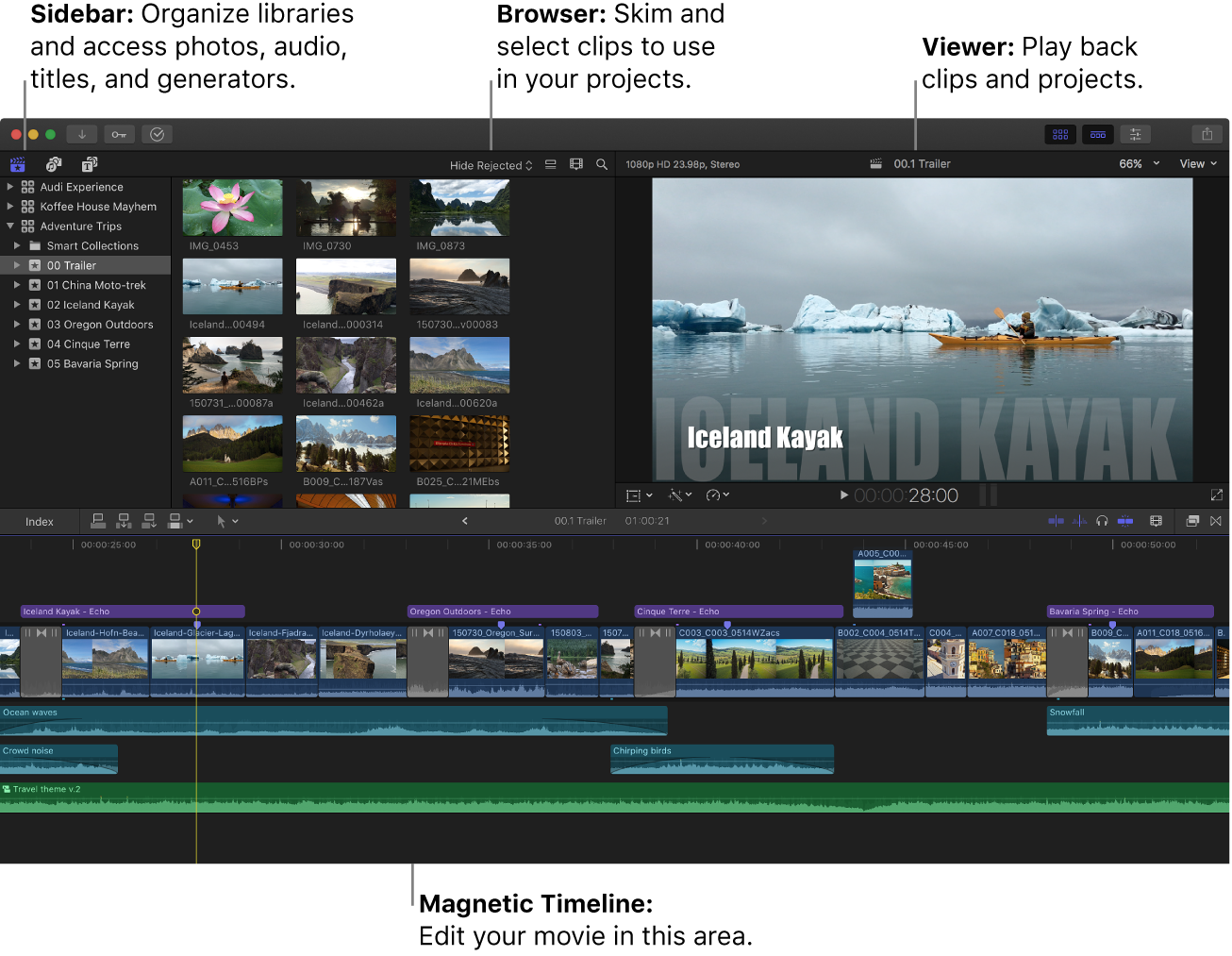Final Cut Pro Cuda
The Final Cut Pro students discount price is $199 which is a better platform due to the inclusion of the Compressor. Although MainStage and Logic are missing, the presence of the apps in the package is a bonus especially if you are a musician or composer. Metal currently provides the best performance boosts across the Adobe suite, Blackmagic DaVinci Resolve and Final Cut Pro X. With this in mind, if you’re using any of these apps, you should be using Metal. For full compatibility check the table below. Final Cut Pro, Motion 5, and Compressor 4 require a graphics card that supports Metal, an Apple technology that lets the system and apps efficiently tap into the capabilities of today’s graphics processors (GPUs). If you're editing 4K video, using 3D titles, or editing 360º video, 1GB of VRAM is recommended. Supported aftermarket graphics cards. Offered by LearnQuest. This course unravels the post-production world for editors. Students will dive into the key features of Apple’s Final Cut Pro software for Video and Audio Editing and learn elements for creating professional videos with the use of transitions and effects, titles and motion graphics, color correction, 360 Video and Media Management. Comfortable with anything from Quartz Composer to Second Life and Final Cut Pro to Adobe Creative Suite, he has laid out books, booklets, brochures and business cards; retouched magazine covers and product packaging, shot and edited short films and animated for HD broadcast TV, film festivals and for the web.
- Final Cut Pro Cut
- Final Cut Pro Cut Free Download
- Final Cut Pro Davinci
- Final Cut Pro Codecs
- Final Cut Pro Data Disc
Recently, I received a number of emails from folks with problems with audio that slowly drifts out of sync. These complaints cover Final Cut Pro X, Final Cut Pro 7, and Compressor.
Sync drift is generally caused by audio sample rates that don’t properly match the audio settings in the sequence. Here’s an article that explains this.
However, there are also problems with ProRes HQ and how it handles audio sync. Take a look at the two comments at the end of this article for more information:
But in the cases this week, the audio sync problem was caused by trying to edit an MP3 audio file. MP3 is extremely compressed and often difficult to edit. I strongly recommend converting (or transcoding) any MP3 files that you need to edit into AIF before you start editing. This won’t improve the quality, but it will simplify your editing. And the good news is that this conversion process is very fast and can be automated.
NOTE: Soundtrack Pro just hates editing MP3 audio – transcoding (or conversion) is almost mandatory.
Here’s how to convert your MP3, or any other audio format, to AIF using Compressor. (I’m using Compressor 4 for this example, but the process is the same using Compressor 3.x.)
1. Open Compressor.
2. Click Add File in the top left corner and import the MP3 file(s) you want to convert.
3. Click the Settings tab, twirl down the Apple folder, twirl down Audio Formats and look for the AIFF File setting.
4. Drag the AIFF File setting on top of the task that contains your audio file in the top window.
5. Look in the Inspector and make SURE the sample rate is set to 48.000 kHz. This is the default setting for recording audio with video. If the sample rate is correct, go to Step 10. If it isn’t, go to Step 6.
6. Click the Encoder button at the top of the Inspector.
7. If the automatic sensor button is dark, as it is here, click it to turn it off.
8. If the clip is mono, set the Channel layout to Mono. If it is Stereo, set Channel layout to Stereo.
Final Cut Pro Cut
9. Change the Sample rate popup menu to 48000.
10. In the task bar at the top, make sure the Destination (middle column) is set and you’ve given the compressed file a name (right column). Then, click Submit in the lower-right corner.

11. In the next dialog, click Submit and your file is sent off to be converted. Converting audio files is VERY fast, so even if you have a lot of MP3 files to convert, you won’t be wasting a lot of time.
NOTE: Once you have a setting you like, turn it into a Compressor droplet which automates the entire audio transcoding workflow. This article explains how. www.larryjordan.com/technique-creating-a-compressor-droplet/
 Bookmark the permalink.
Bookmark the permalink.Graphics card requirements
Final Cut Pro, Motion 5, and Compressor 4 require a graphics card that supports Metal, an Apple technology that lets the system and apps efficiently tap into the capabilities of today’s graphics processors (GPUs). If you're editing 4K video, using 3D titles, or editing 360º video, 1GB of VRAM is recommended.
Final Cut Pro Cut Free Download
Supported aftermarket graphics cards
Final Cut Pro Davinci
The following aftermarket graphics cards support Metal in macOS Mojave and later:
Final Cut Pro Codecs
- AMD Radeon HD 7950 Mac Edition
- NVIDIA GeForce GTX 680 Mac Edition
- NVIDIA Quadro K5000 for Mac
- AMD Radeon VII
- MSI Gaming Radeon RX 560 128-bit 4GB GDRR5
- SAPPHIRE Radeon PULSE RX 580 8GB GDDR5
- SAPPHIRE Radeon HD 7950 Mac Edition
- NVIDIA Quadro K5000 for Mac
- NVIDIA GeForce GTX 680 Mac Edition
- AMD Radeon RX 560
- AMD Radeon RX 570
- AMD Radeon RX 580
- AMD Radeon Pro WX 7100
- AMD Radeon RX Vega 56
- AMD Radeon RX Vega 64
- AMD Radeon Pro WX 9100
- AMD Radeon Frontier Edition
Learn more
Final Cut Pro Data Disc
- Learn about Final Cut Pro, Motion 5, and Compressor 4